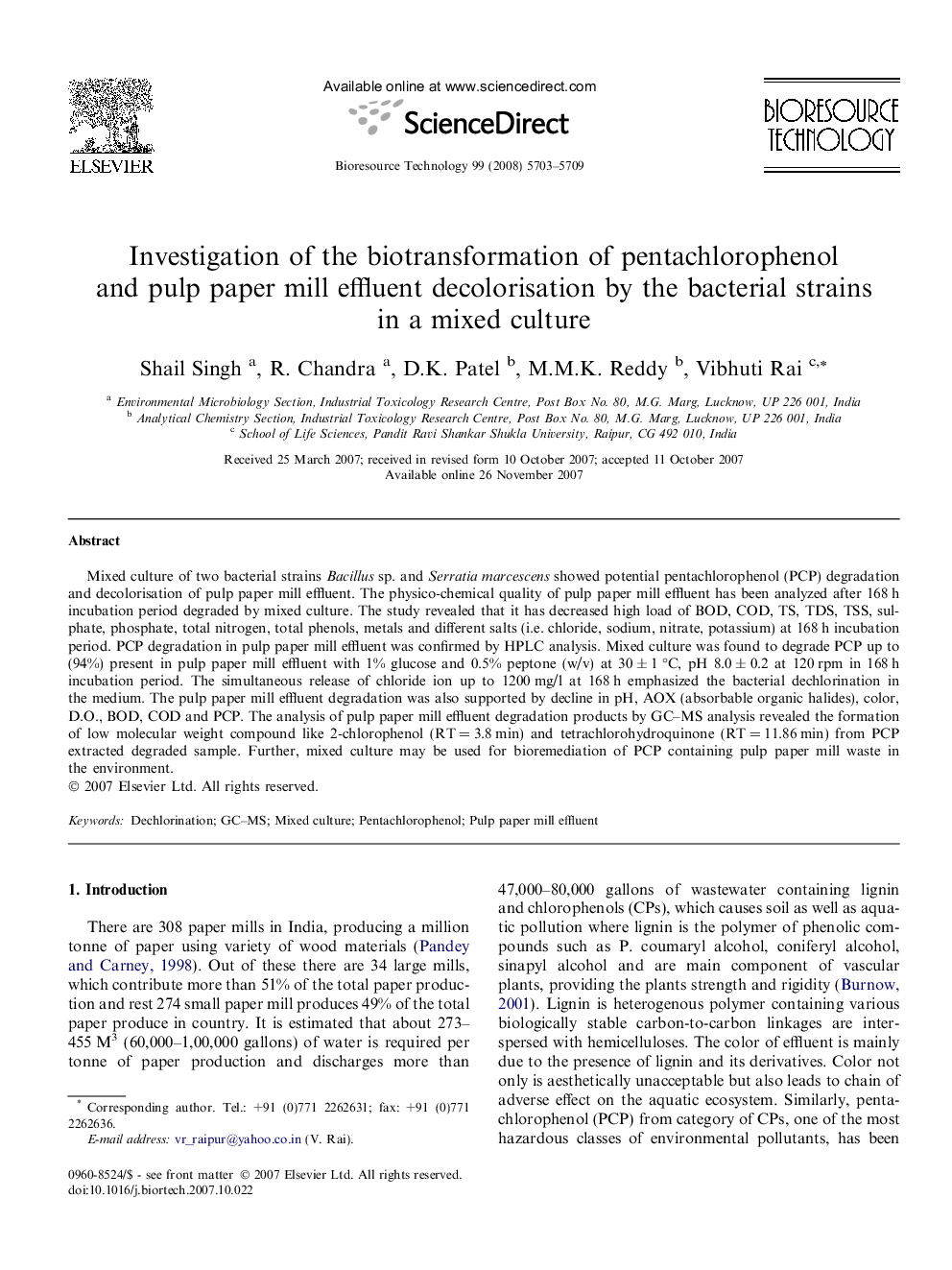| Article ID | Journal | Published Year | Pages | File Type |
|---|---|---|---|---|
| 685131 | Bioresource Technology | 2008 | 7 Pages |
Mixed culture of two bacterial strains Bacillus sp. and Serratia marcescens showed potential pentachlorophenol (PCP) degradation and decolorisation of pulp paper mill effluent. The physico-chemical quality of pulp paper mill effluent has been analyzed after 168 h incubation period degraded by mixed culture. The study revealed that it has decreased high load of BOD, COD, TS, TDS, TSS, sulphate, phosphate, total nitrogen, total phenols, metals and different salts (i.e. chloride, sodium, nitrate, potassium) at 168 h incubation period. PCP degradation in pulp paper mill effluent was confirmed by HPLC analysis. Mixed culture was found to degrade PCP up to (94%) present in pulp paper mill effluent with 1% glucose and 0.5% peptone (w/v) at 30 ± 1 °C, pH 8.0 ± 0.2 at 120 rpm in 168 h incubation period. The simultaneous release of chloride ion up to 1200 mg/l at 168 h emphasized the bacterial dechlorination in the medium. The pulp paper mill effluent degradation was also supported by decline in pH, AOX (absorbable organic halides), color, D.O., BOD, COD and PCP. The analysis of pulp paper mill effluent degradation products by GC–MS analysis revealed the formation of low molecular weight compound like 2-chlorophenol (RT = 3.8 min) and tetrachlorohydroquinone (RT = 11.86 min) from PCP extracted degraded sample. Further, mixed culture may be used for bioremediation of PCP containing pulp paper mill waste in the environment.
